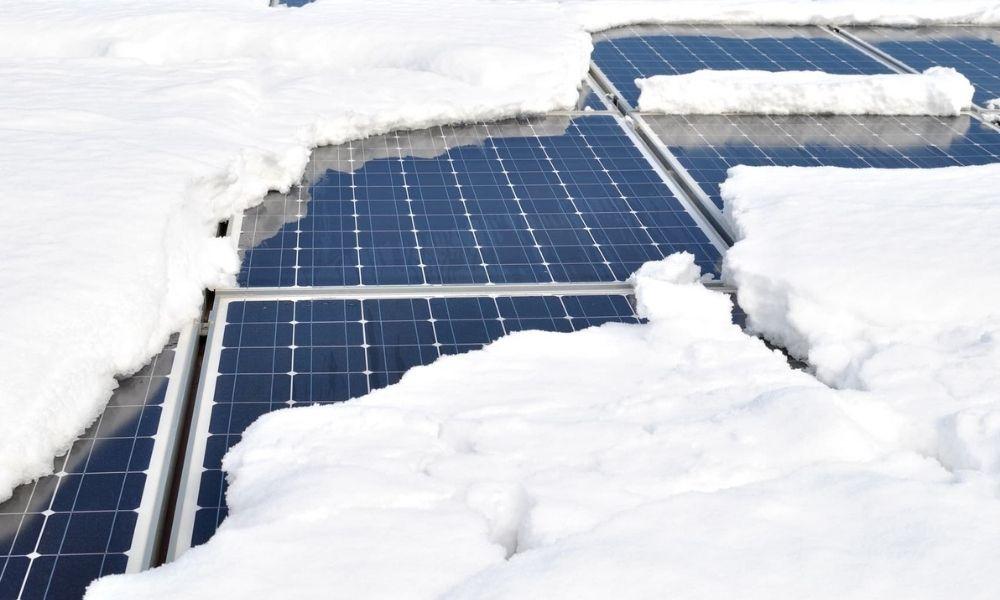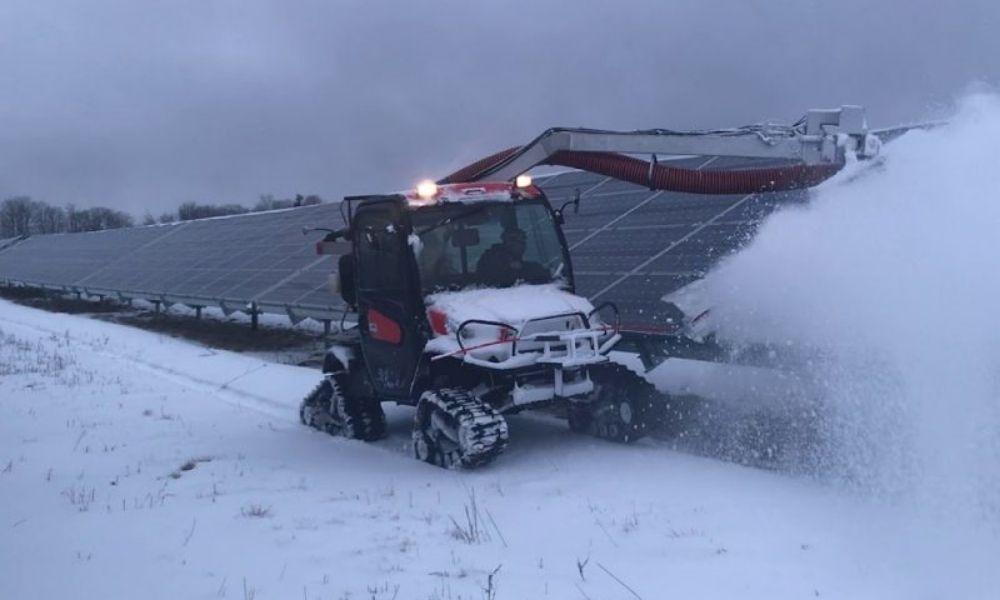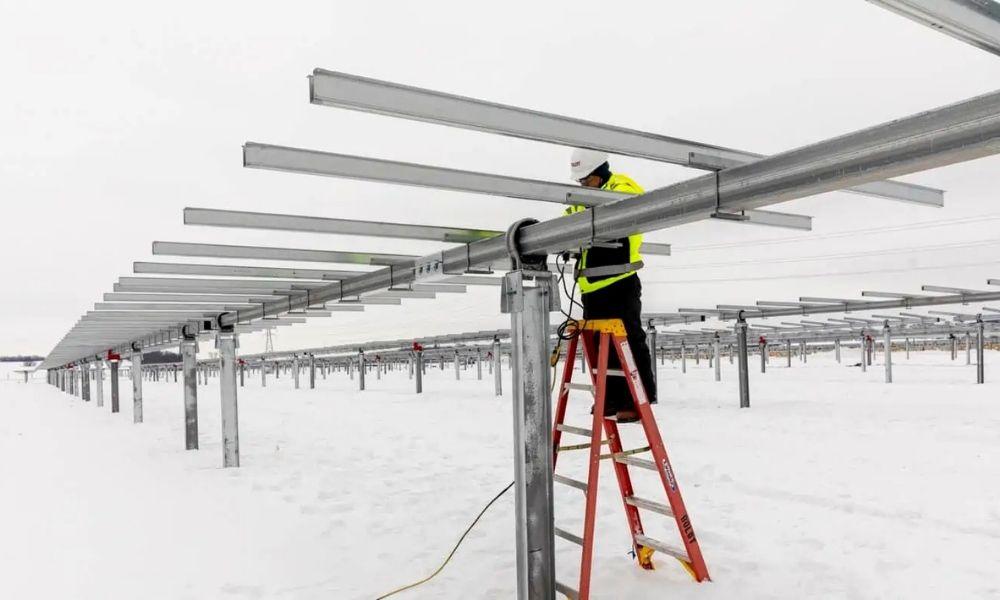How to remove snow from solar farm when cold wave is coming?
Impact of snow on Solar farm
Reduced power generation efficiency
Snow covering the surface of PV panels will blocks the incoming light, thereby decreasing the power generation of the solar modules. Studies have shown that when a layer of snow blankets a PV panel, the efficiency of power generation can plummet by over 80%.
Increased module loading
The weight of the snow accumulation exerts additional pressure on the PV modules.According to research that the snow load on solar panels generally reaches 5400 Pa, which is equivalent to a weight of 54 kg per square meter. However, the density of snow generally ranges from 100 kg/m³ (fresh snow) to 500 kg/m³ (melted snow), if snow is not cleared for a long time, and the thickness exceeds 11-54 cm, it may exceed the maximum load capacity of the PV modules, leading to deformation or damage to PV modules.
Shortened service life
Prolonged exposure to low temperatures and water droplets from melting snow can cause corrosion of electrically connection components, thus shortening the lifespan of the equipment.

Common Snow Removal Measures
Manual Snow Removal
Manual snow removal is the most common method of snow removal, refers to the manual clearing of snow from the PV modules. The advantages of this method include simplicity, flexibility, and low cost. However, it has disadvantage such as low efficiency, high labor intensity and significant safety risks, it is easily to scratch the surface of the PV module, Influencing the performance of PV modules.

Natural Snow Melting
Natural snow melting is a passive method that primarily leverages the component’s own characteristics . For example, adjusting the tilt angle :during the design of the solar farm, the tilt angle of the solar panels can be adjusted according to local snowfall conditions to facilitate the natural sliding off of snow. Additionally,the photo-thermal effect can also be leveraged, under sunlight, the PV panels generate some heat, and proper photo-thermal effects can help melt some of the snow. The benefits of this method include no need for manual or machine intervention, saving labor and material resources. Its effectiveness is unstable and heavily influenced by environmental factors, which may cause safety hazards from snow accumulation or flying down of ice.
Mechanical Snow Removal
For large-scale solar farm, mechanical snow removal can be considered. The advantages of this method are high efficiency, low labour intensity, not subject to temperature limitations, and wide range of application. Of course, its disadvantage is also obvious, include higher costs, a limited variety of snow removal machines currently available, and the equipment is not very perfect, there are many shortcomings

Preventive Measures Against Snow Accumulation
Scientific Design
When we design solar farm should fully consider climatic factors , design optimal panel tilt angles and bracket materials to effectively reduce the impact of heavy snow on solar farm.

Quality Equipment
Selection of high-quality PV modules and inverters can enhance the pressure resistance and service life of the power plant.
Advance Planning
Before winter arrives, it is important to develop detailed snow removal plans and train staff in snow removal skills.
Monitoring Weather
Utilizing meteorological information to anticipate cold waves and snowfall in advance, so as to be prepared for better preparation and timely snow removal operations.
Conclusion
The impact of snow on solar power generation is multifaceted. But through appropriate snow removal methods and effective preventive measures, we can ensure the efficient operation of solar farm in cold weather and safeguard their power generation capabilities and equipment safety.